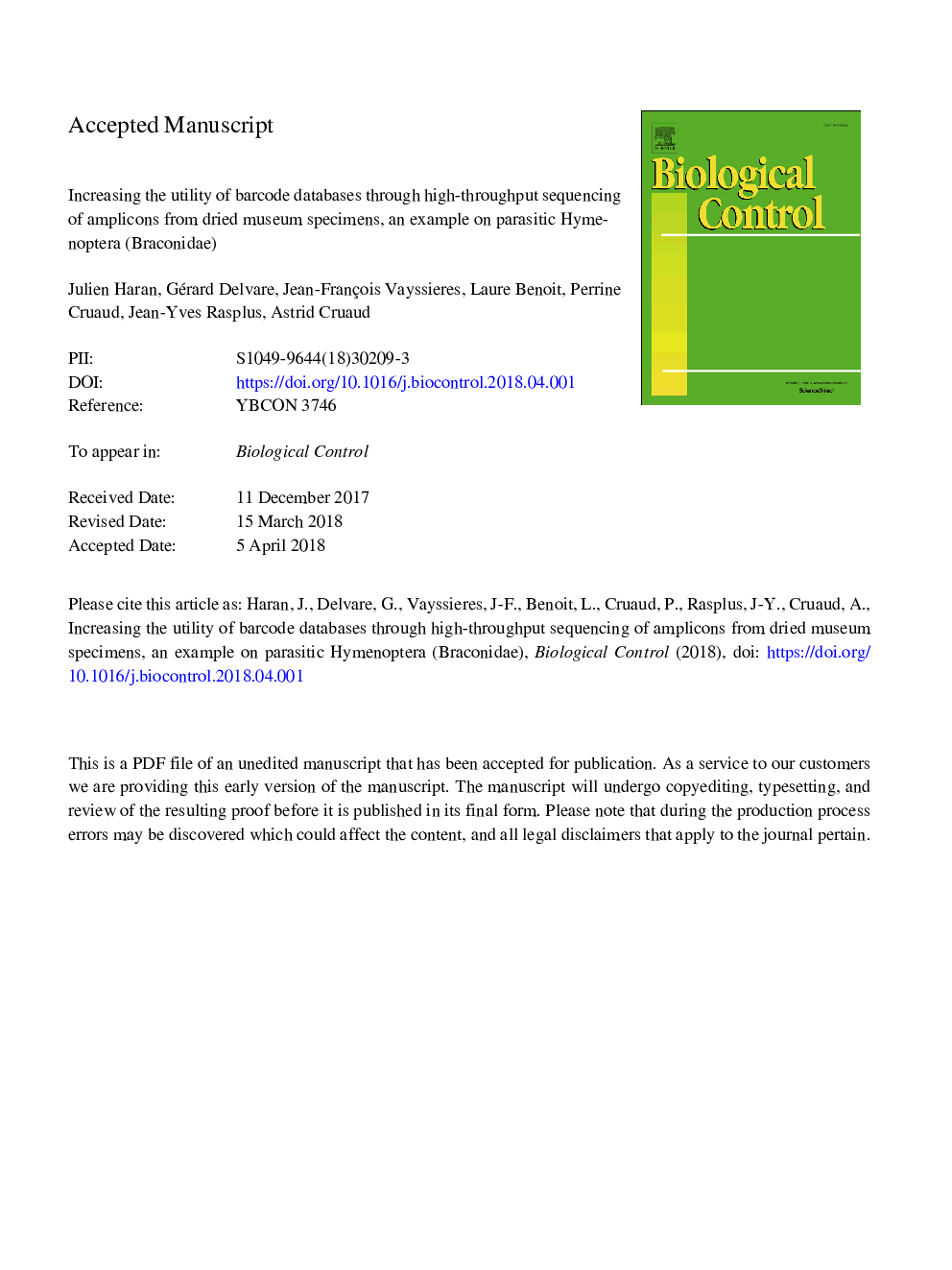| Article ID | Journal | Published Year | Pages | File Type |
|---|---|---|---|---|
| 8877623 | Biological Control | 2018 | 22 Pages |
Abstract
Parasitic hymenoptera are natural enemies of a wide range of crop pests. However, the complex taxonomy of this group and the scarcity of taxonomic expertise make difficult the accurate identification of species, which limits their use in biological control programs. In this study, we explored the potential of a two-step PCR approach combined with Illumina sequencing to recover mitochondrial protein coding genes (COI and Cytb) from dry specimens from a reference collection, whose DNA was extracted non-destructively. We studied 18 species of afrotropical Braconidae (Microgastrinae, Opiinae and Braconinae) collected 10 to 35â¯years ago. Depending on the target region, sequences were obtained from 61 to 90% of the specimens. The full barcode was reconstructed in ca 90% of the species. A customized analysis pipeline allowed us to manage the high rate of contamination and to identify co-amplified sequences of hosts of parasitoids. As a result, in a single analysis, we were able to 1) generate new barcodes for poorly known species, 2) obtain a preliminary overview of intra specific variability, 3) generate a few data on host-parasitoid associations based on remains of hosts in adult wasps. This cost-effective approach should allow to improve the quality of reference molecular databases by capitalizing on museum specimens identified by expert taxonomists, in order to set up more efficient biological control programs.
Related Topics
Life Sciences
Agricultural and Biological Sciences
Agronomy and Crop Science
Authors
Julien Haran, Gérard Delvare, Jean-François Vayssieres, Laure Benoit, Perrine Cruaud, Jean-Yves Rasplus, Astrid Cruaud,
